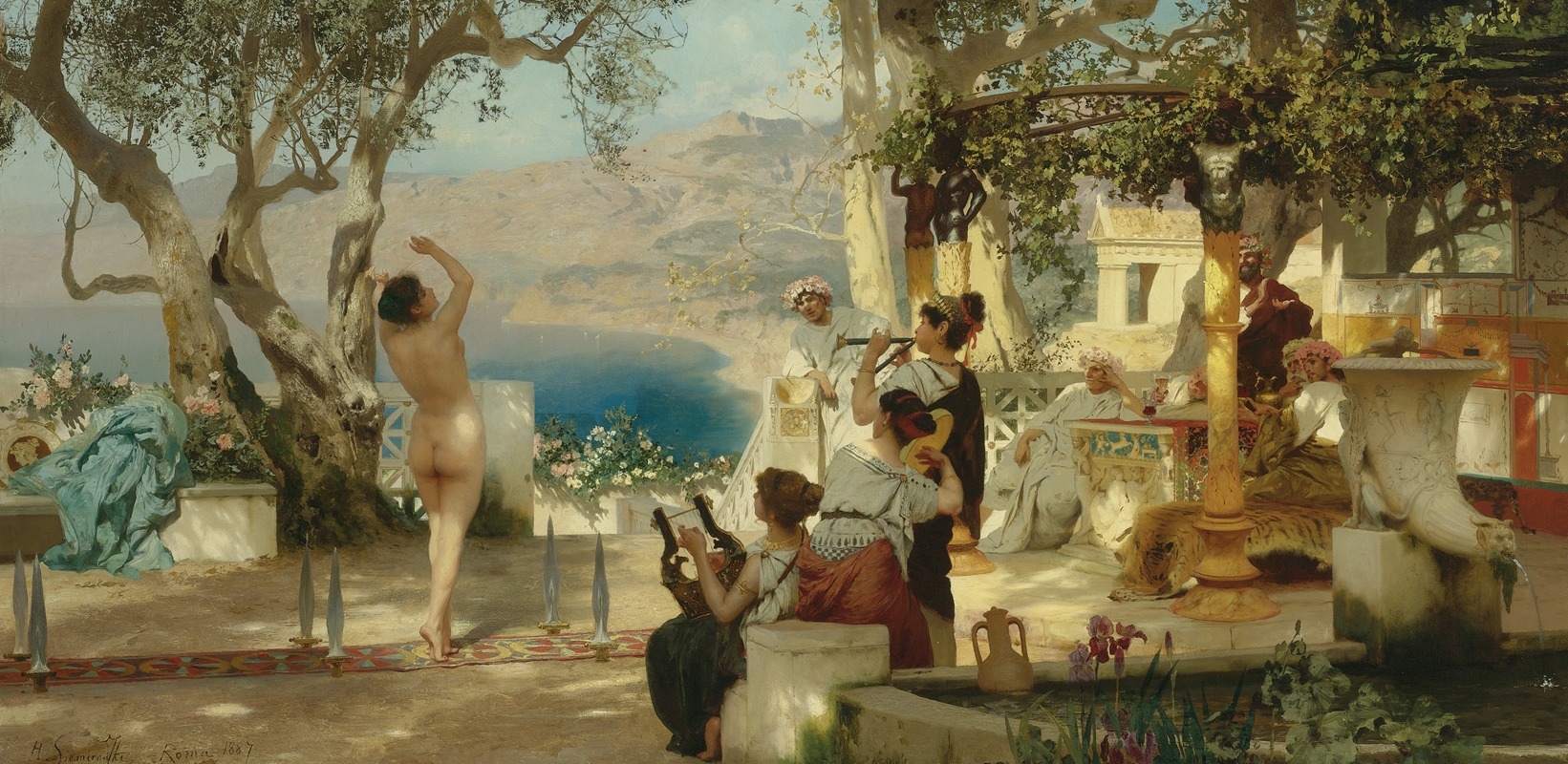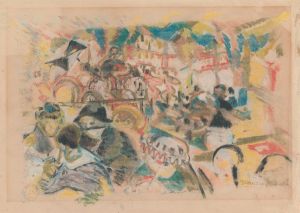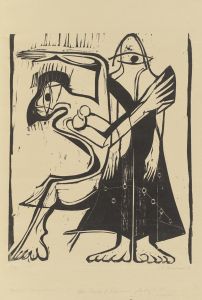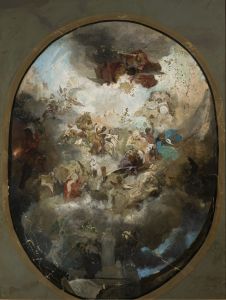
The sword dance
A hand-painted replica of Henryk Siemiradzki’s masterpiece The sword dance, meticulously crafted by professional artists to capture the true essence of the original. Each piece is created with museum-quality canvas and rare mineral pigments, carefully painted by experienced artists with delicate brushstrokes and rich, layered colors to perfectly recreate the texture of the original artwork. Unlike machine-printed reproductions, this hand-painted version brings the painting to life, infused with the artist’s emotions and skill in every stroke. Whether for personal collection or home decoration, it instantly elevates the artistic atmosphere of any space.
Henryk Siemiradzki's painting The Sword Dance is a notable work by the 19th-century Polish painter, renowned for his large-scale academic and historical compositions. Siemiradzki, born in 1843 in what is now Ukraine, was a prominent figure of the late Romantic period and is best known for his depictions of scenes from antiquity, often infused with dramatic lighting and meticulous attention to detail.
The Sword Dance portrays a dynamic and theatrical moment, characteristic of Siemiradzki's fascination with ancient cultures and their rituals. The painting depicts a group of figures engaged in a ceremonial or celebratory dance involving swords, set against a backdrop that evokes the grandeur of classical antiquity. The scene is rich in detail, with carefully rendered costumes, architecture, and expressions that reflect Siemiradzki's academic training and his dedication to historical accuracy.
Siemiradzki was deeply influenced by his studies at the Imperial Academy of Arts in Saint Petersburg and his subsequent travels to Italy, where he immersed himself in the classical art and architecture of Rome. These experiences shaped his artistic vision and are evident in the classical themes and settings of his works, including The Sword Dance. The painting reflects his ability to combine historical subject matter with a sense of theatricality, creating compositions that are both visually striking and evocative of a bygone era.
While specific details about the commission or exhibition history of The Sword Dance are not widely documented, Siemiradzki's works were highly sought after during his lifetime. He gained international recognition and exhibited his paintings in major European cities, including Paris, Vienna, and Berlin. His works often explored themes of beauty, morality, and the interplay between pagan and Christian traditions, which resonated with the cultural and intellectual currents of his time.
Siemiradzki's legacy as an artist is closely tied to his ability to bring historical and mythological scenes to life with a sense of drama and authenticity. The Sword Dance exemplifies his mastery of composition, color, and light, as well as his deep appreciation for the art and culture of antiquity. Today, his works are held in museums and private collections, where they continue to be admired for their technical brilliance and historical resonance.
No further specific information about The Sword Dance is available in public records or art historical literature.


















